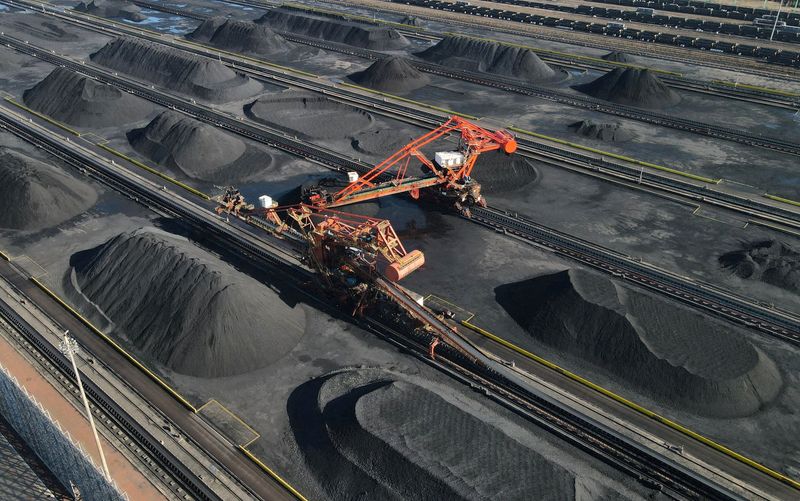By Clyde Russell
LAUNCESTON, Australia (Reuters) – China imported a document quantity of coal in 2024, driving world imports of the gas to an all-time excessive. So why are coal exporters beginning 2025 in a deep blue funk?
For coal exporters, China is each their saviour and tormentor, because the document import volumes are solely attainable as a result of seaborne costs have dropped to multi-year lows.
Costs for export coal have declined to be able to stay aggressive with China’s home costs, with the world’s largest producer and importer of coal driving what occurs in world coal markets.
China’s coal imports rose to an all-time excessive of 542.7 million metric tons in 2024, up 14.4% from 2023’s 474.42 million tons, in line with customs information launched on Monday.
There have been a number of elements driving the rise, together with decrease hydropower technology, which boosted demand for thermal coal for electrical energy manufacturing.
Nevertheless, it is seemingly the principle issue behind China’s document imports was the decline in costs for seaborne coal from high exporters Indonesia and Australia.
Indonesian coal with an vitality content material of 4,200 kilocalories per kg (kcal/kg) was assessed by commodity value reporting company Argus at $49.97 a ton within the week to Dec. 30, down 13.5% for the 12 months and the bottom since April 2021.
Australian 5,500 kcal/kg coal, a grade well-liked with Chinese language consumers, was assessed at Newcastle Port by Argus at $81.77 a ton within the week to Dec. 27, down 12.3% for the 12 months and the weakest since July 2021.
The costs have began 2025 softly, with the Australian grade dropping to $81.01 a ton within the week to Jan. 10, whereas the Indonesian gas slipped to $49.67.
The decline in seaborne thermal coal costs got here as China’s home costs additionally weakened, with consultants SteelHome assessing coal at Qinhuangdao port at 775 yuan ($106) a ton on Monday.
That is barely up from the current low of 765 yuan a ton on Dec. 27, which was the weakest since June 2023, and down 17.6% from the 2024 excessive of 940 yuan in late February.
There’s a little bit of a chicken-and-egg state of affairs with coal costs and import volumes, and it is not clear whether or not the sturdy stage of shipments is a results of weakening costs, or if softer costs have allowed volumes to stay sturdy.
For China, imports picked up within the second half of the 12 months as seaborne costs have been declining, with the strongest month being November’s 54.98 million tons.
However India, the world’s second-biggest coal importer, confirmed a unique sample, with imports declining within the second half of 2024 whilst costs weakened.
India’s whole coal imports have been 228.72 million tons in 2024, down a modest 2.7% from the document of 234.99 million in 2023, in line with information compiled by commodity analysts Kpler.
UNCERTAIN 2025
The query for coal producers is whether or not seaborne demand shall be as sturdy in 2025 because it was in 2024, and the outlook is much less sure.
International seaborne coal imports have been 1.279 billion tons in 2024, up marginally from 1.276 billion the prior 12 months, in line with Kpler.
China might import much less in 2025, with the China Coal Transportation and Distribution Affiliation stating in a seminar final week that it expects imports to fall to 525 million tons.
India might also see decrease imports if home output continues to rise and the federal government continues insurance policies to encourage extra consumption of native manufacturing.
Exterior of the massive two importers, it is arduous to make a bullish case. Demand in Asia’s different giant consumers, Japan and South Korea, is prone to stay regular at greatest.
Europe’s imports fell for a second 12 months in 2024 to 88.52 million tons from 108.98 million in 2023, in line with Kpler information.

Regardless of the lack of pipeline Russian provides, it is unlikely utilities will change again to coal given environmental issues.
The views expressed listed below are these of the writer, a columnist for Reuters.




